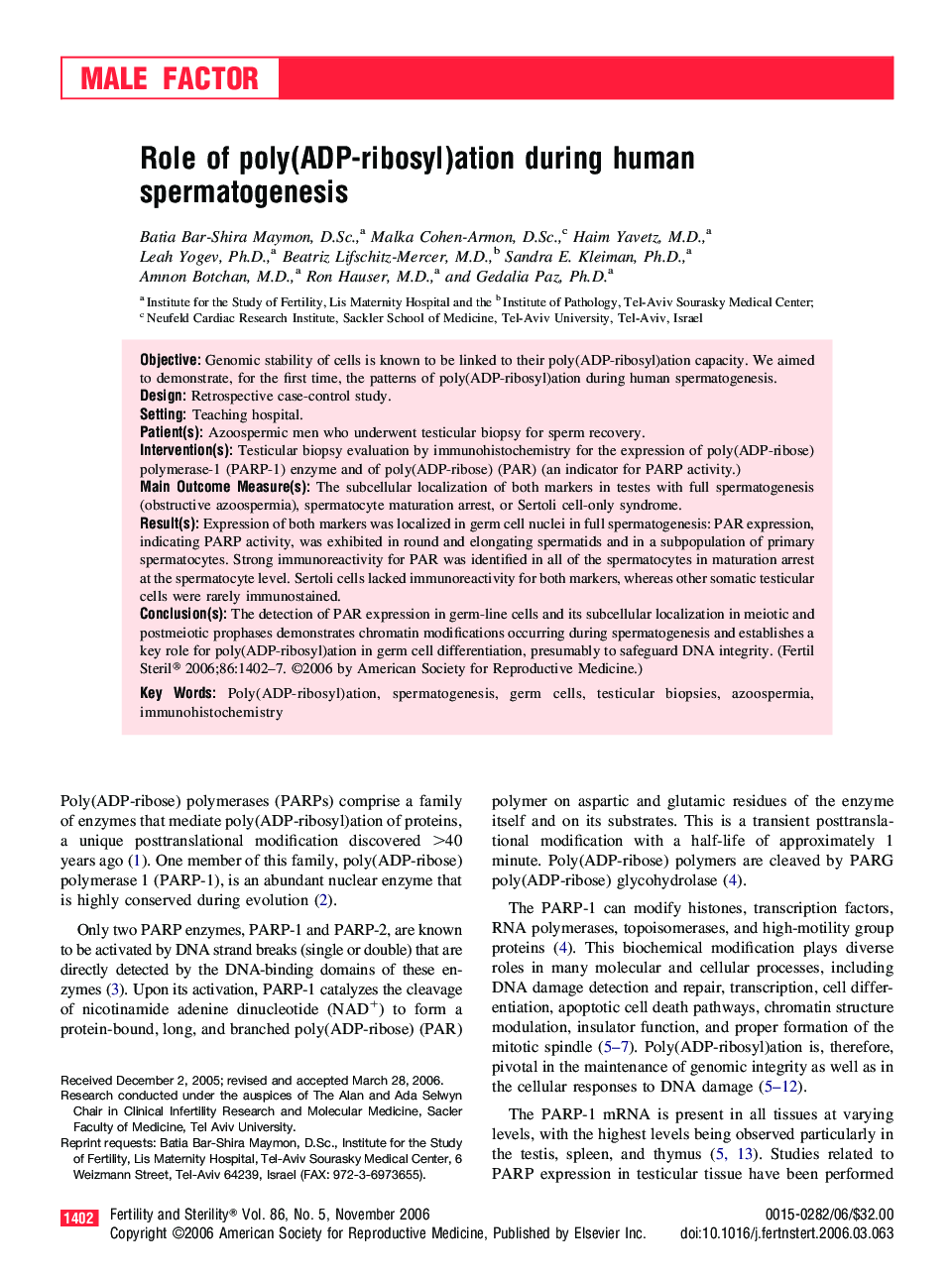| Article ID | Journal | Published Year | Pages | File Type |
|---|---|---|---|---|
| 3940355 | Fertility and Sterility | 2006 | 6 Pages |
ObjectiveGenomic stability of cells is known to be linked to their poly(ADP-ribosyl)ation capacity. We aimed to demonstrate, for the first time, the patterns of poly(ADP-ribosyl)ation during human spermatogenesis.DesignRetrospective case-control study.SettingTeaching hospital.Patient(s)Azoospermic men who underwent testicular biopsy for sperm recovery.Intervention(s)Testicular biopsy evaluation by immunohistochemistry for the expression of poly(ADP-ribose) polymerase-1 (PARP-1) enzyme and of poly(ADP-ribose) (PAR) (an indicator for PARP activity.)Main Outcome Measure(s)The subcellular localization of both markers in testes with full spermatogenesis (obstructive azoospermia), spermatocyte maturation arrest, or Sertoli cell-only syndrome.Result(s)Expression of both markers was localized in germ cell nuclei in full spermatogenesis: PAR expression, indicating PARP activity, was exhibited in round and elongating spermatids and in a subpopulation of primary spermatocytes. Strong immunoreactivity for PAR was identified in all of the spermatocytes in maturation arrest at the spermatocyte level. Sertoli cells lacked immunoreactivity for both markers, whereas other somatic testicular cells were rarely immunostained.Conclusion(s)The detection of PAR expression in germ-line cells and its subcellular localization in meiotic and postmeiotic prophases demonstrates chromatin modifications occurring during spermatogenesis and establishes a key role for poly(ADP-ribosyl)ation in germ cell differentiation, presumably to safeguard DNA integrity.
